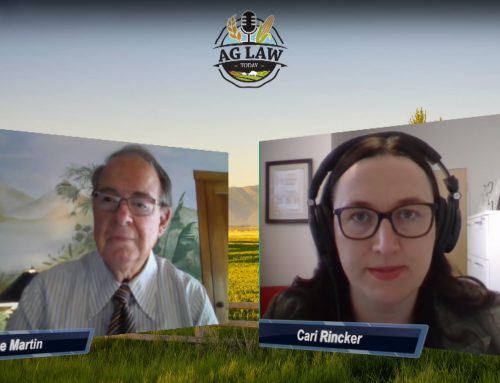Florida and other southern states have a corner on the majority of the plant-based agriculture market for one common reason: the tropical nature of their respective growing seasons. In short, states like Florida, California, Texas and more are the best places to grow fruits like oranges, various vegetables and other plant-based produce because their growing seasons are long and marked by warm temperatures and lots of sunshine. However, geothermal greenhouses may be on the edge of changing all that, according to an NPR piece. Thanks to geothermal greenhouses, growers in the Midwest—specifically a northwestern Nebraskan gentleman farmer named Russ Finch—have combined the greenhouse concept with heat from the earth to grow a lot of interesting produce; a variety of citrus, for one.
Greenhouses have been around for quite some time, and they have received a lot of attention in agriculture media corners with stories of urban producers turning to such structures to grow produce—mainly salad greens—in city settings. However, greenhouses turn into an expensive proposition once heating becomes an issue. That’s where Finch’s use of geothermal technology has been so successful. While the structure has an array of heat-collecting features—its floor is dug four feet into the ground, the roof is slanted to catch as much southern sunshine as can be, and so on. However, for the state’s Great Plains area that regularly sees low temperatures in the negative digits—down to -42 degrees on one occasion—it’s not enough to ensure temperate temperatures in the middle of a cold winter’s night.
Geothermic technology revolutionized the heating and cooling industry a few years back, doing for home heating and cooling what solar and wind power did for home electricity. Geothermal technology uses the earth’s constant temperature underground—usually in combination with heat-collecting coils—to bring heat in to a building or to take it out. It’s a form of technology that doesn’t rely on fossil fuels and will eventually be the norm in every home once the technology’s price point migrates to the realm of the average homeowner.
In the case of Finch’s geothermal greenhouse, the geothermal component keeps the structure just below freezing—a chilly 28 degrees—at night when the sun’s warming rays can’t be captured by the greenhouse glass. It’s cold by our standards, but for lemons, grapefruit, oranges, figs, grapes and more, it’s above the threshold that matters. “We can grow just about any tropical plant,” Finch was quoted as saying in the NPR piece.
Finch’s numbers are impressive. The daily energy costs of the structure? A thrifty $1 a day, according to the NPR article. The 1,200 square-foot greenhouse produces a few hundred pounds of fruit a year, which is sold to farmer’s markets in the area. Experts maintained that Finch’s concept can’t work for every crop with such a small output of energy, but Finch pointed out that such problems require just a few more steps of ingenuity, such as utilizing methane from local cattle operations to realize the energy for the additional heat needed to grow tomatoes or other truly heat-intolerant plants. In short, OJ from Nebraska just may be a thing in agriculture’s future.



